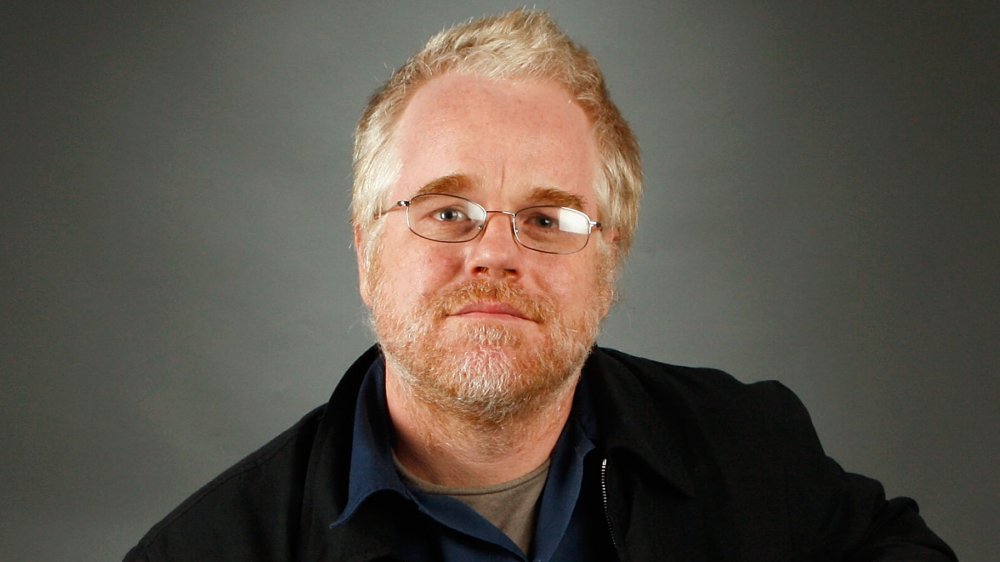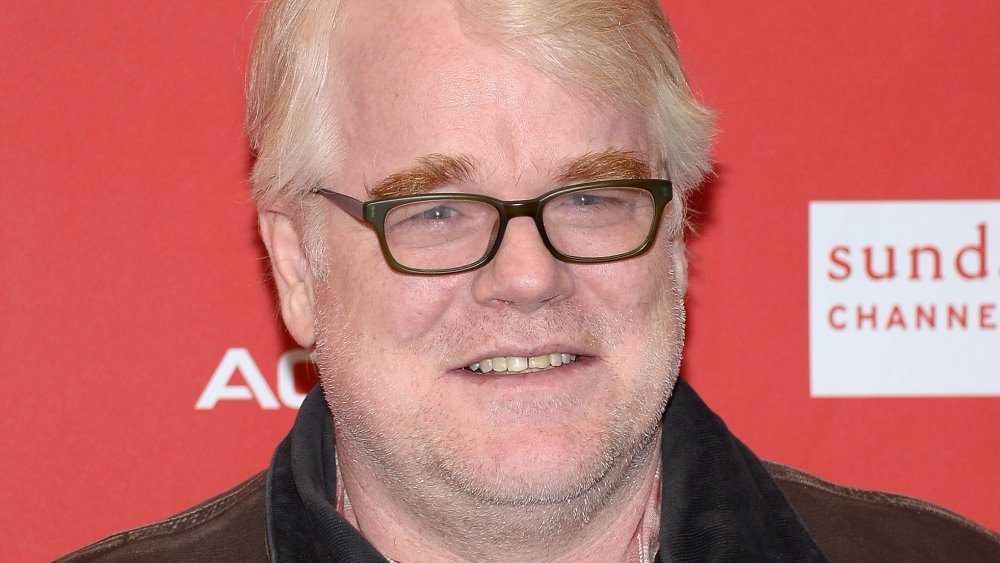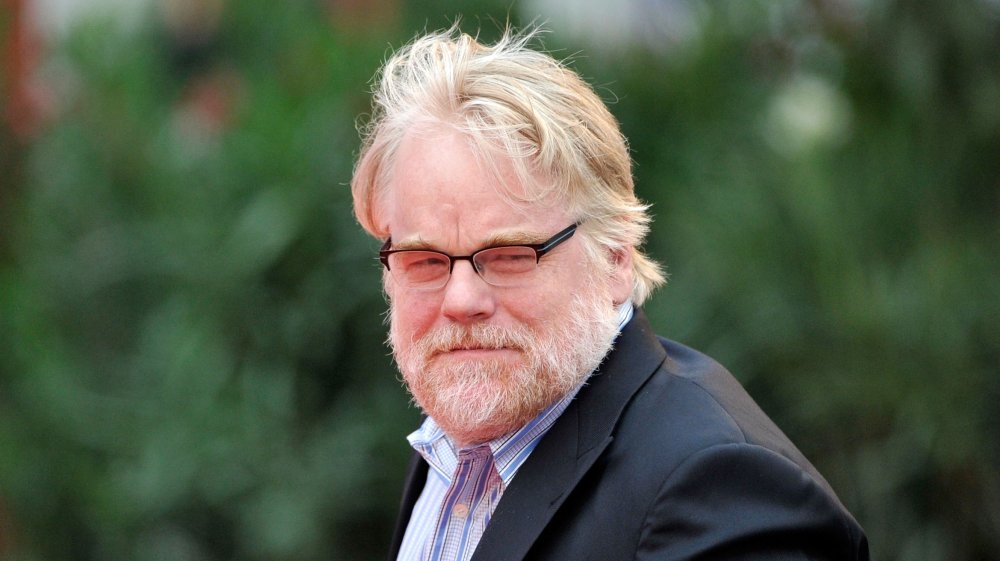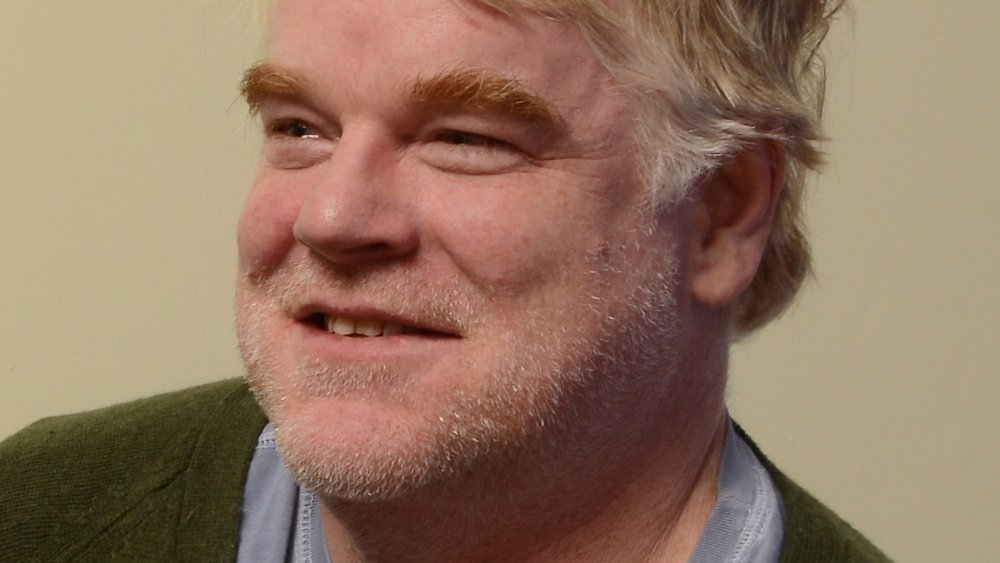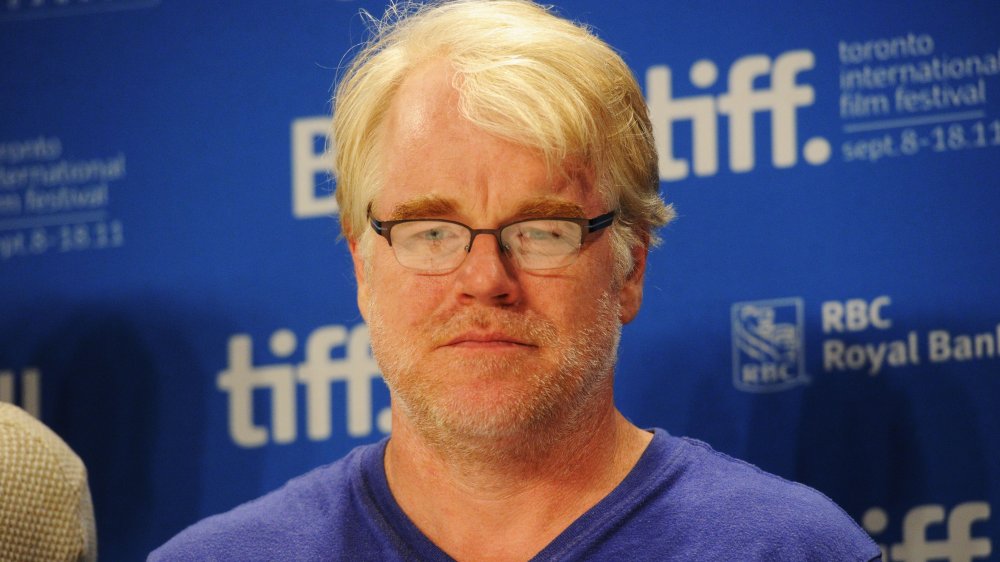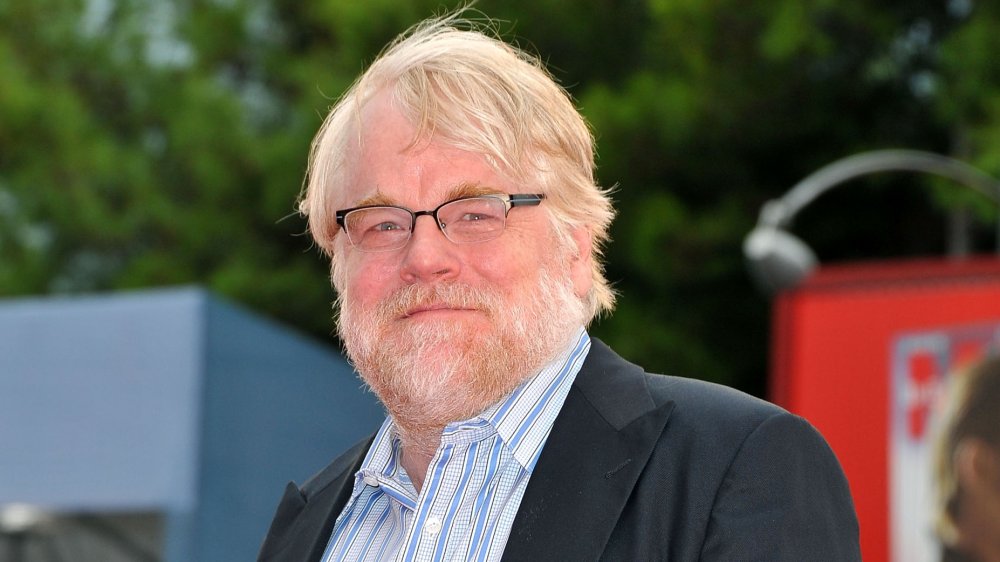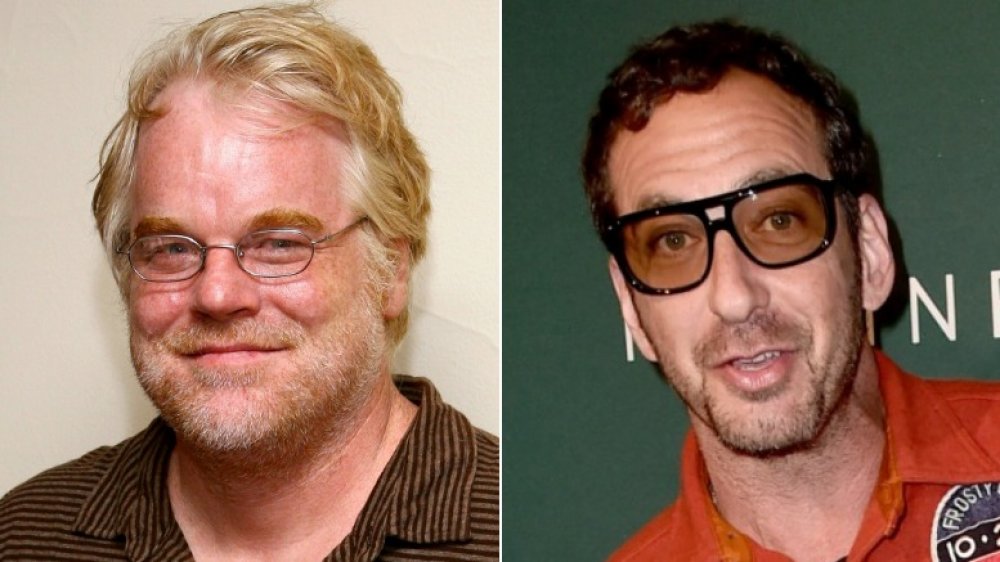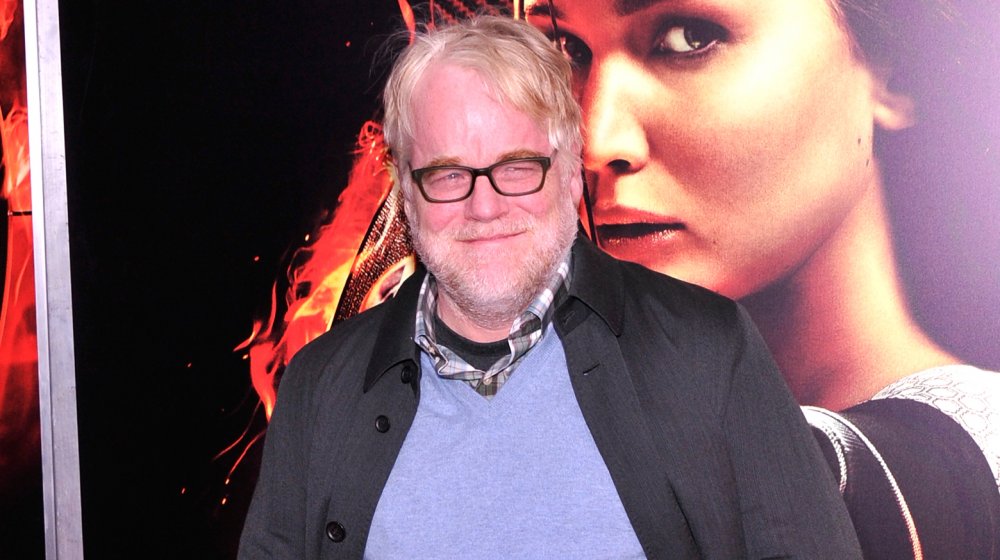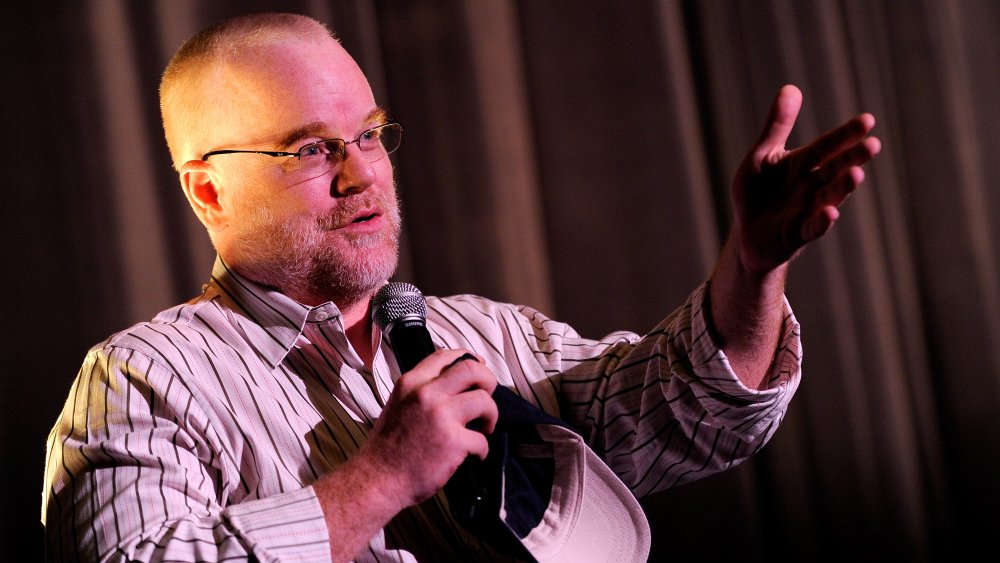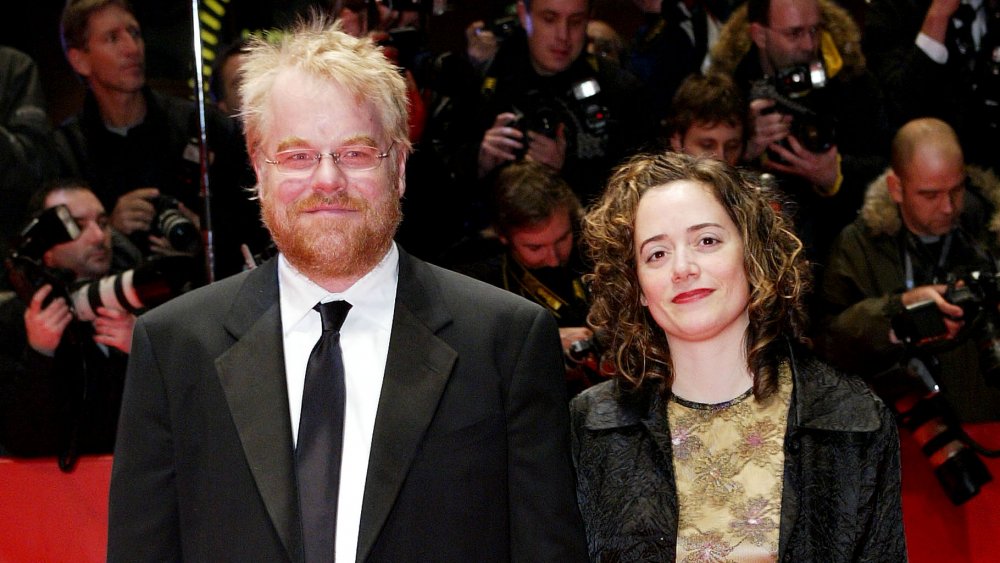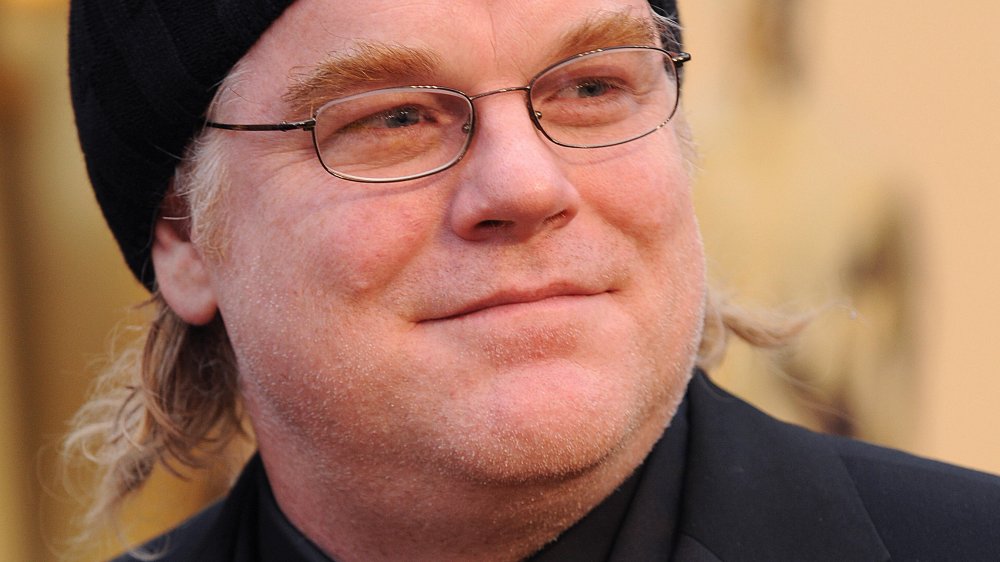Philip Seymour Hoffman: What's Come Out About Him Since He Died
Philip Seymour Hoffman seemed to have it all as an extremely talented actor with over 50 film credits and a best actor Oscar. But underneath the New York native's stellar success, dark shadows were lurking.
Hoffman began abusing drugs and alcohol and eventually landed in rehab when he was just 22. Two decades of sobriety followed during which he became an A-list star, found a wonderful partner in costume designer Mimi O'Donnell, and started a family, having three children. However, unbeknownst to most of his fans, Hoffman struggled with sobriety his entire life. He would eventually relapse and it cost him everything he loved.
After the celebrated star's abrupt passing on Feb. 2, 2014, fans were desperate to know what happened. What followed were countless investigations, rumors, and finally, a gut-wrenching tribute to her late partner by O'Donnell that answered many lingering questions. Here's what's come out about Philip Seymour Hoffman since the actor passed away.
Philip Seymour Hoffman's final hours were bizarre
Following Philip Seymour Hoffman's unexpected passing, media outlets tried to piece together the timeline of events leading up to his shocking death. One of the most thorough reports came from CNN, which carefully dissected the famous actor's final 24 hours. What they discovered was a bizarre chain of events. Hoffman's morning reportedly began like any other with a visit to Chocolate Bar on 8th Avenue where he placed his usual order: "a four-shot espresso over ice with a splash of milk." According to manager Jonathan Hanson, who spoke with CNN, Hoffman "seemed perfectly fine." Hanson added, "He seemed in good spirits. He was very happy."
That was no longer the case around 2 p.m. when he bumped into the mother of his children, Mimi O'Donnell, on the street. The pair had separated at this point and Hoffman was living on his own around the corner. She noted that he seemed high. Three hours later, executive producer Paul Pabst, his wife, and his sister spotted Hoffman on Greenwich Street and reportedly had the same impression. Being a fan, Pabst's sister worked up the courage to approach Hoffman, but, as Pabst recalled, she found Hoffman to be "out of it."
Come dinnertime, the 46-year-old was spotted at Automatic Slims, having dinner with two people, eating a cheeseburger and drinking a cranberry and soda. His night then took a dark turn when, according to an eye witness, he entered a supermarket with two men wearing messenger bags around 8 p.m. He proceeded to take out $1,200 from an ATM in six transactions, authorities confirmed, and that was the last time he was seen alive.
Before he died, Philip Seymour Hoffman was in a 'very dark' place
Despite his illustrious career, which included over 50 film credits and a best actor Oscar for Capote in 2006, Philip Seymour Hoffman reportedly remained humble and friendly. According to a 2014 People cover story, "in the downtown Manhattan neighborhood he had called home for years, Philip Seymour Hoffman was simply one of the locals: the rumpled cyclist pedaling through the West Village; the dad walking his three children to school; the actor poring over scripts or having a drink at one of his favorite low-key bars."
Underneath the seemingly happy exterior, however, demons must have been secretly lurking. As one local recalled, Hoffman was a master at pulling it all together, then letting it fall apart. "He'd go over to Oliver's restaurant with his son Cooper. They'd have lunch, and you'd see them talking and laughing for hours at a time," he told People. "Then, come nightfall, you'd see Phil back at Oliver's, hunched over the bar, alone, looking like an entirely different man. He looked very dark and depressed."
Photographer Victoria Will, who shot the actor at the Sundance Film Festival shortly before he passed away, also noted his masterful ability to put on a brave face. "He seemed great," she recalled. "He was just a regular guy, which is what I've always loved about him."
There were drugs — lots of drugs
Hoffman's struggle with drug and alcohol was a lifelong battle, as noted by People magazine. After drinking heavily and using drugs, he wound up at a rehabilitation center by the age of 22. Speaking with The Guardian in 2011, he confessed, "I had no interest in drinking in moderation. And I still don't. Just because all that time's passed doesn't mean maybe it was just a phase. That's who I am." Hoffman's sobriety lasted for 23 years thanks to therapy and AA meetings — then he relapsed, as Mimi O'Donnell noted in her 2017 Vogue tribute to her ex. Also in her Vogue piece, O'Donnell wrote, "I didn't fully understand that addiction is always lurking just below the surface, looking for a moment of weakness to come roaring back to life."
Hoffman first relapsed with alcohol, then prescription opioids, then heroin and yet, throughout it all, the extent of his addiction was hidden from the public until after his passing. As CNN reported, Hoffman was found dead on the bathroom floor, wearing a T-shirt and shorts with his glasses still on his head and a needle in his left arm. Upon further investigation, authorities discovered more and more signs of shocking drug use, the Daily Mail wrote, including 49 unopened glassines (paper envelopes specifically used to hold heroin). There were also eight empty glassines, 20 used needles, and pills prescribed for treating anxiety and high blood pressure.
The real cause of Philip Seymour Hoffman's death was disputed
Following an investigation into Philip Seymour Hoffman's overdose, the New York Post reported that five empty glassines were found in a trash bin and three others were discovered around the home, as well as 70 unused glassines in a desk drawer. That's a quite a different number than the 49 full glassines and seven empty glassines the Daily Mail claimed there had been in Hoffman's apartment.
The exact numbers weren't the only thing that was disputed, however, as Hoffman's cause of death was also covered by opposing reports. Following a spike in deaths linked to fentanyl-laced heroin, including 22 overdoses in Pittsburgh, Pa. in 2014, Slate noted that this may have the culprit behind Hoffman's own overdose. As the outlet explained, fentanyl, a prescription drug used for pain relief, is "cheaper and between 50 to 80 times more potent," which is problematic when an unknowing user administers their usual dose.
The Atlantic, on the other hand, wasn't so sure. It pointed out that the names stamped on each of the glassines, representing the type of heroin found inside, didn't match any of those linked to the fentanyl-laced overdoses in other cases. They argued, "That Hoffman's death coincides with a rash of heroin-fentanyl overdoses is certainly suggestive. But, at this point, it seems most likely that his death was more prosaic: a fairly recently relapsed heroin user taking an overdose of the drug."
Philip Seymour Hoffman's alleged dealer was 'like the grim reaper'
On Feb. 4, 2014, just two days after Hoffman's overdose, the New York Post reported that four suspected dealers were arrested in connection with his death, following a raid on a New York City drug den where the actor was suspected of previously buying heroin. Among them was musician Robert Vineberg, who was believed to be the actor's primary drug dealer. TMZ called Vineberg "like the grim reaper" because he was friends with at least three A-listers who died from overdoses.
In addition to Hoffman, Vineberg was reportedly close with Jean-Michel Basquiat. He was said to have had him over at his apartment often where they both "used A LOT of heroin." The legendary artist overdosed in 1988. Vineberg was also reportedly tight with Amy Winehouse, although there are no records of the pair ever using drugs together.
For his part, Vineberg actually agreed to an interview with the New York Post from behind bars to maintain his innocence, saying, "He was my friend," and "I could've saved him." Vineberg continued, "If I knew he was in town, I would've said, 'Hey, let's make an AA meeting.' If I was with him, it wouldn't have happened. Not under my guard." Even so, he admitted to seeing Hoffman high and claimed that Hoffman may have been using as much as ten bags of heroin a day. When asked if he had ever sold drugs to the late actor, Vineberg refused to answer.
One tabloid claimed Philip Seymour Hoffman was in a gay relationship
Screenwriter David Bar Katz and Philip Seymour Hoffman's assistant, Isabella Wing-Davey, were the people who discovered Hoffman's body, and Katz's involvement apparently helped fuel tabloid rumors that the pair were more than just friends. What actually happened, as reported by the New York Post, was that Hoffman failed to pick up his kids from Mimi O'Donnell as scheduled, so she asked the playwright to go check on him at his rented apartment, which he did, and he was let into Hoffman's home by Wing-Davey.
That didn't stop the National Enquirer (via Philly Mag) from publishing jaw-dropping allegations about a relationship between Hoffman and Katz. The paper ran an alleged interview with Katz in which he apparently admitted to having sex with the late actor. "We were homosexual lovers. We had a relationship," the outlet quoted him as saying, adding that Katz had allegedly watched Hoffman use heroin and cocaine several times. They quoted him admitting, "I was Philip Seymour Hoffman's gay lover and saw him freebasing cocaine the night before he died."
Katz vehemently denied the story, going so far as to sue the National Enquirer for $50 million, claiming the article was "a complete fabrication," as the New York Daily News reported. Meanwhile, Katz's lawyer issued an additional statement on his behalf, saying, "There was no interview." He stated, "Bar Katz and Hoffman were never lovers. Bar Katz did not see Hoffman freebasing cocaine the night before he died or at any other time. Bar Katz never saw Hoffman use heroin or cocaine."
Did Philip Seymour Hoffman really disinherit his kids?
Throughout his career, Philip Seymour Hoffman did a good job of keeping his private life exactly that — private. He and his longtime partner, Mimi O'Donnell, had three children together — Cooper, Tallulah, and Willa — but little was known about any of them. When the Oscar winner suddenly died in 2014, the kids were just 10, 7, and 5 years old, People reported, but it turns out that their young ages weren't the reason why they didn't inherit any of their famous father's fortune. Instead, it was because the actor purposely left them out of his will, leaving all of the assets of his $35 million estate to their mother, Today confirmed.
E! News was able to gain access to the probate documents surrounding Hoffman's will from Manhattan's Surrogate Court in which Hoffman's reasoning for the unconventional decision was revealed. In the papers, Hoffman was quoted as telling his accountant that he "did not want his children to be considered 'trust fund' kids."
The documents also noted that, although they never wed, Hoffman treated O'Donnell as his wife and that their lack of nuptials "did not affect his affinity or relationship" with her as he "simply did not believe in marriage."
Philip Seymour Hoffman's TV show tried to debut without him... and failed
Despite being most widely known for his big screen roles, Philip Seymour Hoffman decided to throw fans a curveball and signed on to executive produce and star in a TV show on Showtime called Happyish. According to Variety, the series was set to debut in 2014 with a 10-episode run in which Hoffman would play a "40-something man working for a Facebook-like company who is frustrated by feeling out of touch while surrounded by younger colleagues." Although a half-hour pilot was already filmed — having been shot in September 2013 before Hoffman's passing — production hadn't actually started on the show.
Initially unsure how to continue, Showtime eventually decided to recast Happyish, choosing Steve Coogan to take over Hoffman's leading role. As The Hollywood Reporter pointed out, most of the original cast didn't actually stick around for the revamped first season, which marked the beginning of the end. The show premiered in 2015, snagging only 430,000 viewers and receiving largely negative reviews. The Hollywood Reporter, for example, dubbed Happyish "more annoying than funny." As such, the series was eventually pulled off the air, failing to secure a second season due to fledgling viewership.
Addiction was 'very much the focus' of Philip Seymour Hoffman's life
"The first time I met Phil, there was instant chemistry between us," Mimi O'Donnell revealed in a 2017 tribute to her late partner, which ran in Vogue. After meeting in 1999 when she interviewed to be the costume designer for In Arabia We'd All Be Kings, the first play Hoffman ever directed, the pair went on their first date in 2001. "From the beginning, Phil was very frank about his addictions," O'Donnell wrote. "Being sober and a recovering addict was, along with acting and directing, very much the focus of his life."
Things were fine for years before "the first tangible sign [of trouble] came when, out of nowhere, [Hoffman] said to [O'Donnell], 'I've been thinking I want to try to have a drink again. What do you think?'" Their relationship would never be the same. That drink gave way to prescription opioids, and then her worst fear came true: Hoffman secretly began using heroin again. "I sensed it, terrified," she recalled. "I told him, "You're going to die. That's what happens with heroin.' Every day was filled with worry. Every night, when he went out, I wondered: Will I see him again?"
Watching her love struggle with sobriety became "heartbreaking," and O'Donnell admitted that was when, "for the first time I realized that his addiction was bigger than either of us. I bowed my head and thought, I can't fix this. It was the moment that I let go."
Philip Seymour Hoffman was the reason Beautiful Boy was made
Released in 2018, Beautiful Boy stars actors Steve Carell and Timothée Chalamet and tells the story of a father and his teenage son who's battling meth addiction. It scored Chalamet a Golden Globe nom for best supporting actor and received overall positive reviews, but, as it turns out, the movie almost didn't get made — at least not with writer Luke Davies attached.
Speaking with Deadline's Pete Hammond, Davies, who battled addiction himself, revealed that he had actually vowed to stay away from the subject of drugs after penning the novel and screenplay Candy and had thus decided to turn down Beautiful Boy. Then everything changed because of Philip Seymour Hoffman.
Three days before Davies was set to meet producers to give them the bad news, Hoffman died. Then he got a powerful message from his father. "My dad wrote me an email, which said, 'I suppose you heard about Philip Seymour Hoffman. That's really sad. ... Luke, sometimes I feel this family is so blessed," Davies recalled. "He was talking about my own history with addiction that resulted in me eventually getting clean," he elaborated, adding, "My dad was not one given to express his emotions in any very overt way, especially about the past, like that. And at that moment, it was kind of like, oh, I never, ever dealt with the father-son relationship in Candy because it was too difficult, too loaded, and so, maybe this is an invitation from the universe to change my opinion about taking this job. At that moment I thought, 'Oh, I really want this job.'"

